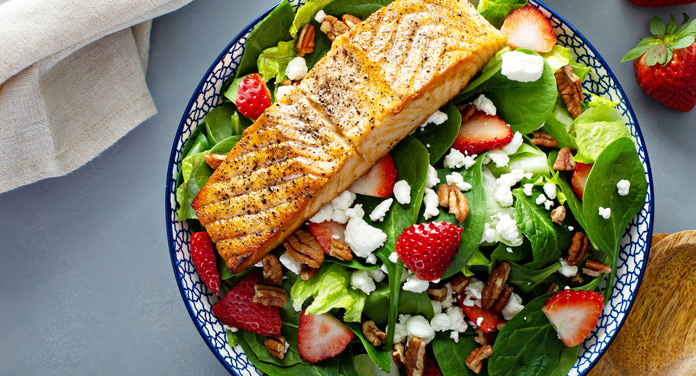Eating a healthy diet is not always easy on a stressful day at work, and you rarely have the time to prepare a balanced, nutritious meal. It is all the more important that your meals – whether bought and prepared to go or prepared yourself – contain as many healthy nutrients as possible, but please with as little effort as possible. Here we introduce you to some of the most nutrient-dense foods in the world that are really good for you and give your body everything it needs.
It Depends On The Nutrient Density
Nutrient-dense foods are those that are high in nutrients for the number of calories they contain. If you actively include nutrient-dense foods in your eating plan, you can increase the number of nutrients you’re consuming per calorie. Examples of nutrient-dense foods are legumes and nuts, which are excellent sources of protein for vegetarians or vegans. Quinoa and sweet potatoes also provide many nutrients and can replace rice.
Here are some of the most nutrient-dense foods in the world:
1. Nuts
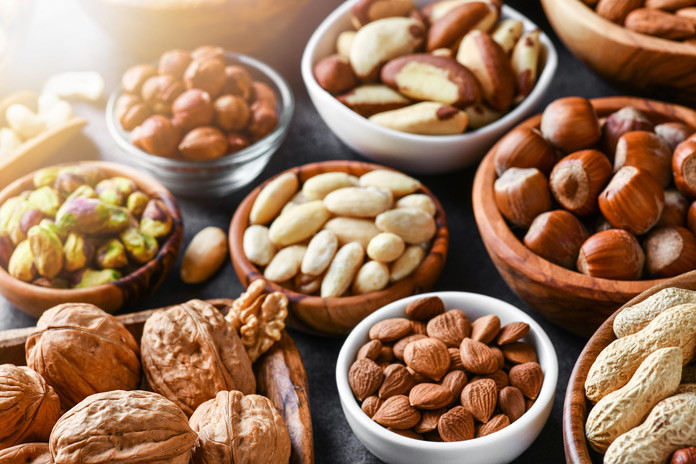
Nuts contain a lot of nutrients but are relatively low in calories. They are so nutritious because they are high in monounsaturated fats. These healthy types of fat are essential for various functions in the body, such as B. the formation of new cells and the optimal supply of organs. They have a different structure than saturated and trans fats, which are unhealthy fats.
Nuts also contain a lot of protein and a number of other nutrients, including fiber, vitamins E and K, folic acid, thiamine, minerals such as magnesium and potassium, carotenoids, antioxidants, and phytosterols. The healthiest nuts are almonds, pistachios, and walnuts, but these should not be salted. Perfect as a topping on a salad!
2. Sweet Potatoes

Sweet potatoes are an excellent source of energy and nutrients. They are high in complex carbohydrates. These types of carbohydrates take longer to break down than simple carbohydrates, which include refined sugar. Therefore, sweet potatoes are a sustainable source of energy. Sweet potatoes contain a number of other nutrients, such as B. Vitamins A, B-6, and C.
They also contain antioxidants such as B. Beta-carotene. Antioxidants are compounds that have multiple health benefits and reduce the risk of chronic diseases, such as. Cancer can reduce. The sweet potato can be boiled, roasted, or fried, either as a side dish or as part of the main course. However, to minimize the rise in blood sugar, it’s best to boil a sweet potato instead of baking it and eating the skin.
3. Salmon
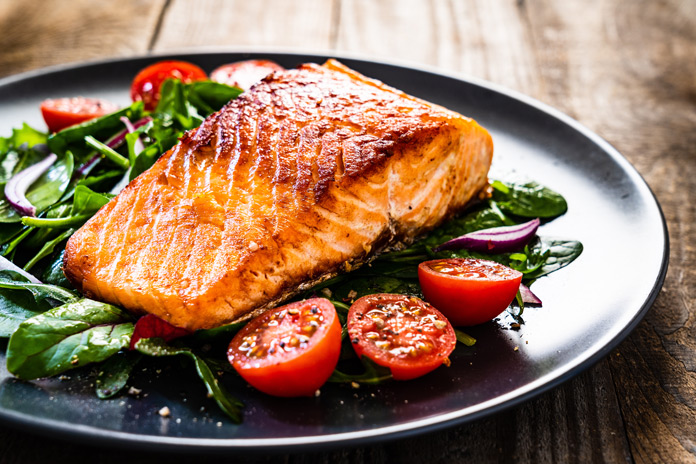
Salmon is an oily fish that offers a variety of health benefits. 100 grams of wild Atlantic salmon contain around 20 grams of protein, making it an excellent source of this nutrient. Protein supports various body processes, such as the construction of cells and body tissue and their regeneration. It is an essential nutrient for human health, meaning the body needs it to function but cannot produce it in sufficient quantities on its own.
The omega-3 fatty acids it contains also have a very beneficial effect on your body, as they can reduce the risk of heart disease. Salmon is also a good source of minerals, including magnesium, potassium, and selenium, and is high in vitamins B-12 and D. For example, smoked salmon can boost the nutritional content of a salad.
4. Legumes
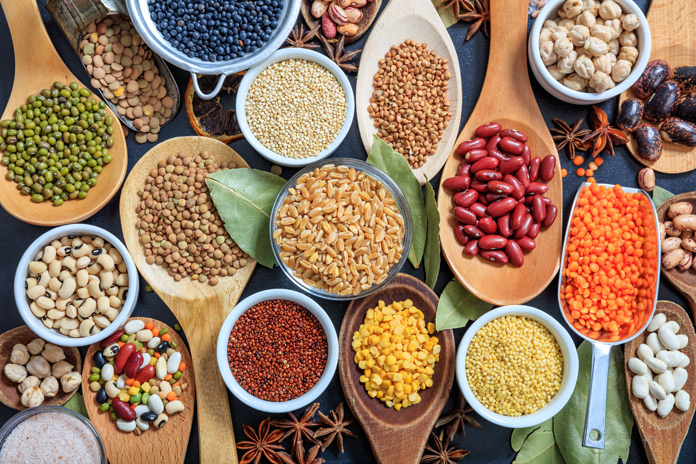
Legumes are an excellent source of protein for people following a vegetarian or vegan diet. Legumes include peas, lentils, beans, and peanuts. These foods are high in fiber, which is important for digestive health. Legumes are highly recommended for their high content of complex carbohydrates, thanks to which they can provide the body with sustained energy without causing an increase in blood sugar levels, which can prevent or even manage diabetes.
Vital B vitamins, antioxidants, and various minerals such as calcium and magnesium can also be found in legumes. Because beans contain phytates, lectins, and other antinutrients that interfere with the body’s ability to absorb nutrients, it’s best to soak and cook them to reduce antinutrient levels.
5. Kale
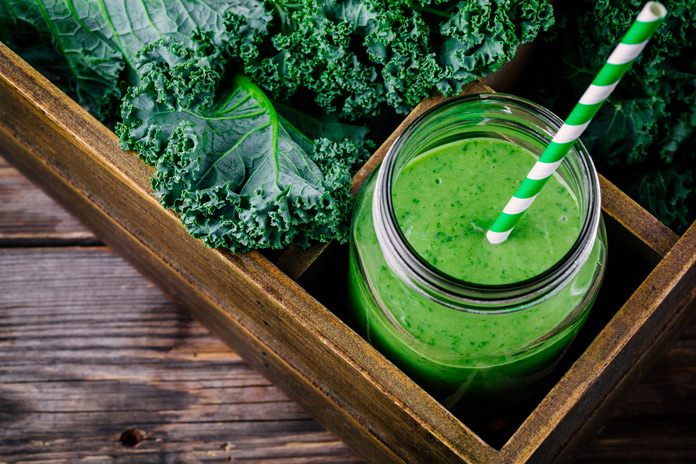
Kale is a green vegetable that belongs to the cruciferous botanical species and deservedly makes the list of the most nutrient-dense foods. It is high in protein, fiber, and beta-carotene. This vegetable also provides a large amount of the essential vitamins A, C, and K.
Vitamin K is particularly important for healthy bone structure and supports tissue formation and blood clotting. It’s less common than vitamins A and C but occurs naturally in kale and other leafy green vegetables. Kale is an excellent addition to any salad or smoothie, or as a blanched side dish.
6. Quinoa
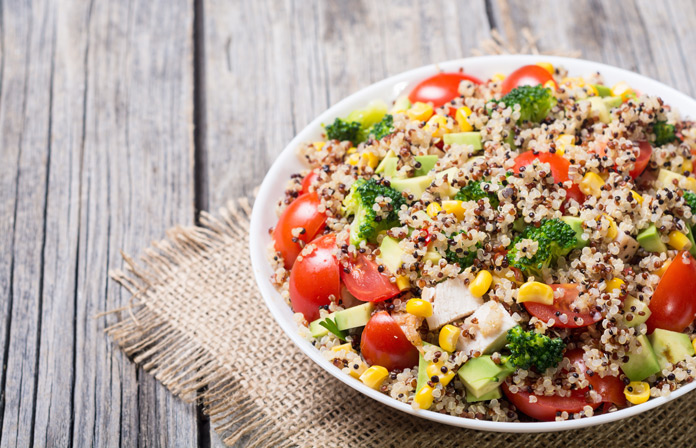
Quinoa is a South American whole-grain cereal with an excellent nutritional profile. It contains complex carbohydrates, so it acts as an excellent source of energy. Unlike many other carbohydrate sources, quinoa also contains a good proportion of other nutrients. Cooked quinoa contains around 2 grams of protein and 1.5 grams of fiber per 50g.
Quinoa is also rich in minerals such as B. phosphorus and magnesium and contains several B vitamins. Quinoa can replace rice or pasta as the main carbohydrate source in a meal. It’s important to rinse quinoa well with a fine-mesh strainer to remove the outer layer, which contains bitter-tasting compounds called saponins.
7. Berries
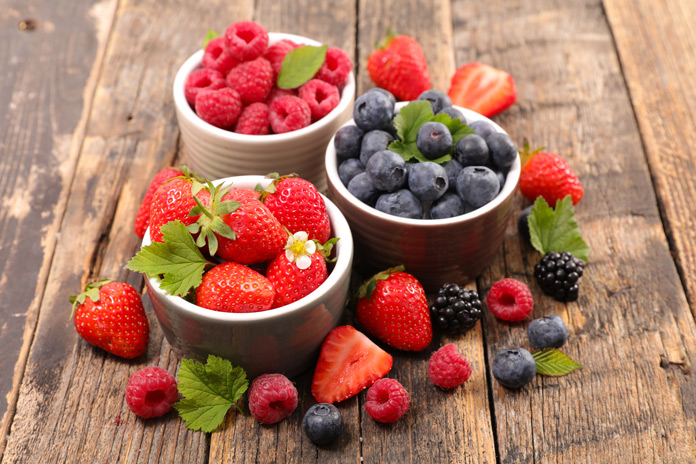
Many types of berries are among the most nutritious fruits on earth. Berries are characterized by one of the highest polyphenol contents. Polyphenols are plant-based antioxidants found only in plants that can actively prevent chronic health conditions. Berries contain anthocyanin, which can have metabolic benefits.
Studies have also found that berries have a positive effect on controlling blood sugar levels and preventing heart disease. They contain fiber, vitamins, and minerals, including vitamin C, vitamin K, and manganese. These fruits make a good side dish for muesli or can be eaten as a tasty snack.
8. Dandelion
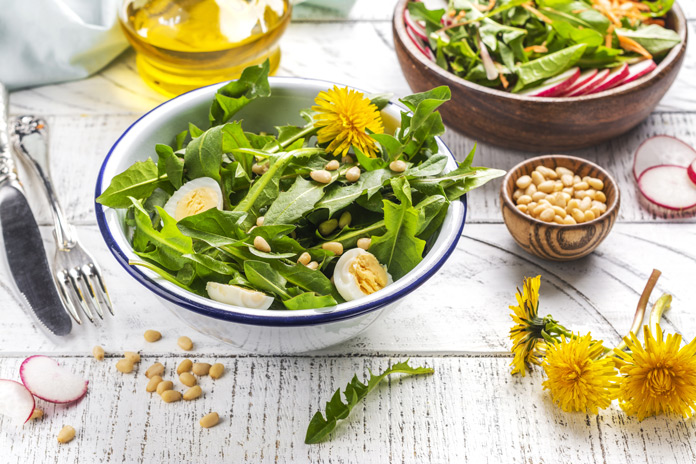
Dandelion is another highly nutritious leafy green vegetable. It contains many of the same nutrients as kale. A cup of chopped dandelion greens contains large amounts of vitamins A, C, and E, as well as 428.1 micrograms of vitamin K. Dandelion greens also contain several minerals, including calcium, iron, magnesium, and potassium.
It is best to boil the dandelion leaves to reduce their bitterness. They go well with other vegetables as a side dish. But beware: you should not collect dandelions near roads or fertilized meadows, otherwise they will be too polluted.
The Most Nutritious Foods – Our Conclusion
Eating a more nutrient-dense diet has tremendous health benefits and can reduce the risk of various chronic health conditions, such as heart disease and diabetes. There are different types of nutrients, including proteins, vitamins, and antioxidants, each with a different purpose in the body. It’s even better if you take in as many of these nutrients as possible with a meal in order to optimally supply your body.

